Emergency 911 & Police
For EMERGENCIES call 911
For Non-emergency Police call (505) 242-COPS: (505) 242-2677
311 Community Contact Center
311 Community contact center
Information about the 311 Community contact center
The 311 Community Contact Center is a centralized call center for the City of Albuquerque. The 311 service is a single telephone number for all non-emergency City of Albuquerque inquiries and services.
We answer questions and respond to requests for service.
HOURS
- Monday through Saturday – 6am. to 9 pm.
- Sunday – 9 am. to 6 pm. (Animal welfare calls and fixed bus times)
REPORT
- Abandoned vehicles
- Graffiti
- Missed trash pick-up
- Streetlight issues
- Broken street lights
- Lost animals
- Pothole
- Weed or litter Complaints
REQUEST
- Information about City events, programs, and services
- Large-item garbage pick-up
- Residential trash or recycle bins
- Traffic pavement markings Traffic signs
Trash Pickup
Normal Trash Pickup Schedule
Collection Day for Hodgin Neighborhood Wednesday
Holiday Schedule
Delayed one day if they fall on a Wednesday
- Christmas
- New Year’s Day
New Residents
The Solid Waste Management department provides one 96-gallon plastic rollout cart for curbside trash and one 96-gallon cart for recycling. Please contact us to begin residential trash and recycling collection. Once you have contacted us, staff will create an account for your residence and will mail you an information packet describing our services. To set up new service please notify Solid Waste Management by calling (505) 761-8100.
Do Your Part with Your Cart
- Please keep trash and recycle carts lids fully closed. Do not overfill carts.
- Set carts out by 7 am. Remove from street within 24 hours.
- So that trucks can easily access the cart, place wheeled cart at least five feet away from
- other carts
- mailboxes
- fire hydrants
- parked cars
- low hanging trees
- utility poles
- Place trash and recycle carts with the wheels and handles toward the curb.
- Trash and recycle carts should be placed in the street.
- Do not place hot ashes or coals into the cart.
- Place all trash in plastic bags.
- All household generated sharps: needles, lancets, and single razor blades must be placed inside a hard plastic container and labeled “Contains Sharps.”
- Do not place hazardous waste in your trash or recycle cart. See Household Hazardous Waste for more information.
- Do not put medications in the trash. See Disposal of Pharmaceuticals for more information.
- Do not put construction or demolition waste.
- Do not dispose of waste containing free liquids.
More information about solid waste disposal can be found at The Solid Waste Management department website.
Fun waste sorting game to learn about where to trash your trash.
Arroyo, Ditch and River Safety Tips
Drowning is the second leading cause of accidental death in New Mexico for ages 1 to 44 years old. Each year over 8,000 people drown in this country. Nearly 4,000 of those drowning occur during the summer months of June, July, and August.
- Practice constant, adult supervision around any body of water, including pools and spas.
- Arroyo, River or Ditches -Never play in or around arroyos. The water can travel from 3-30mph.
- Be careful! Even when arroyos are dry, they can flood very quickly
- If caught in the flowing water, float on your back, feet downstream
- Call for help
- Stay calm
- Avoid bridge supports and debris, use feet to push off
- Stay floating on your back until the water slows down
- Do not try to swim or stand up until the water slows
- Reach for a rope or other object when near you
- Never attempt a rescue, you may become the next victim
Albuquerque Fire Rescue has 11 Stations whose personnel are trained and ready to deploy 24/7 to a Water Rescue incident. Albuquerque Fire Rescuers trains annually to maintain certifications and to be prepared to respond if the need arises.
Hahn Arroyo and Bike Trail
The Hahn Arroyo and Bike Trail runs through Hodgin, East to West from San Mateo NE to Carlisle NE. At least once a year volunteers from the Hodgin Neighborhood gather with bags & gloves donated to us from the ABQ Waste Dept. and clean up along the Bike Trail. Usually this is in the fall …. so keep this in mind for we would like you to join us!
The Story Behind the Hahn Arroyo
The Hahn drainage was named after a small settlement and trading point located at the mouth of the arroyo. It was established around 1910 by William H. Hahn. The lo- cation was also a railroad stop, built in 1909 four miles north of Albuquerque. Besides the station, the village of Hahn had additional railroad facilities. Historically, Hahn was where single track ended and double track began as trains headed south into Albuquerque.
W. H. Hahn was a merchant who sold coal from his commercial yards in downtown Albuquerque and Santa Fe. He was also part owner of the Madrid mines, source of his coal. For a time, he served as vice president of American Lumber Company which was, along with the railroad, one of the largest employers in early Anglo Albuquerque. For a brief period he owned a Cadillac dealership. Around 1917, Hahn moved to Los Angeles.
From Hahn Arroyo/Paseo del Nordeste – cabq.gov Parks a Recreation
Hodgin Neighborhood Association
Mission Statement
Our purpose is to promote a better neighborhood and community through group action, so that the quality of life in the area shall be in keeping with the social environment, cultural and historic needs, and interests of the residents.
HNA History
HNA In the beginning…
Principal Rose Dixon instigated the creation of Hodgin Neighborhood Association. She contacted parents whom she knew at the school who were active and initiated a meeting with the city. Mary Lou Haywood Spells was the coordinator of the Office of Neighborhood Coordination at the time and she lived and still lives in our neighborhood.
With her expert guidance and the support of Hodgin Elementary, we elected a board, selected our name, wrote by-laws and became a recognized neighborhood association. We came into existence in April of 1995. Over the past years we have waxed and waned. We almost lost our recognition with the city, but throughout our existence we have had good neighbors who agree to serve on the board and volunteer, time, talent and money to make our little community welcoming, safe, and neighborly. Before the proliferation of on -line information and publications we used to deliver a wonderful quarterly newsletter to every door and many businesses within our boundary.
We are indebted to all of those living and deceased who have served Hodgin Neighbor- hood Association and we thank each of them for their contributions to make it a great place to live.
Cathy lntemann – December 23, 2020
Charles Hodgin
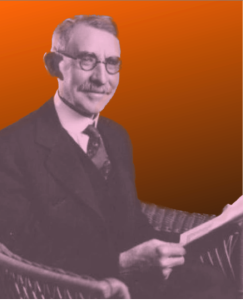
We are proud that our neighborhood is named after
Charles Elkanah Hodgin
Born: August 21, 1858
Died: September, 1934
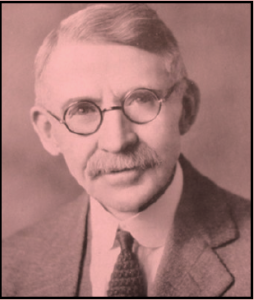
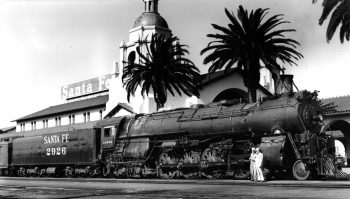
Charles E. Hodgin was born in (Terre Haute ?) Indiana, August 21, 1858.
With the newly built transcontinental railroad extension into the territory of New Mexico, the young Quaker came to Albuquerque in 1885 on account of the ill health of his wife.
New Mexico was sill a territory in 1885 when Charles Hodgin arrived in Albuquerque. It was admitted to the Union as the 47th state on January 6, 1912.
Freshly arrived, Hodgin taught at the Highland school, after which he taught in the intermediate department of the Albuquerque Academy before becoming principal for four years.
A champion of public education, Hodgin was one of the organizers of the Educational Association of New Mexico Territory in 1886, and served as president in two different years. As a delegate to the National Association held in San Francisco, he was elected its sixth vice-president.
At the organization of the city schools (APS) in 1891, he was elected their Superintendent, a position he held “constantly and efficiently” throughout his tenure.
During his twelve years teaching in the Albuquerque Public Schools (1885-1897), the first building of the liberal arts New Mexico Normal School was completed (1892). Hodgin concurrently attended what is now known as the University of New Mexico, and graduated as a member of the university’s first graduating class of 1894.
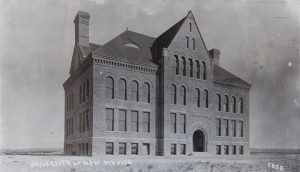
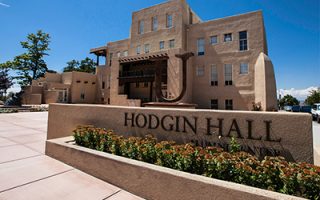
The first building still stands and is currently the University of New Mexico Administration Building. In 1936, the building was posthumously renamed Hodgin Hall in honor of Professor Charles Hodgin. Hodgin had advanced from his position as principal of the prep school [Albuquerque Academy?] to become head of education, dean, and vice president over his 28 years (1897-1925) at UNM.
Students of New Mexican educational history equate not only race but religion with the early denials of access to the concepts of Anglo learning. Jane C. Atkins, author of a 1982 prize-winning UNM dissertation, detected a Protestant bias against the predominantly Catholic faith of the Hispano population. William G. Ritch, a Wisconsin native appointed territorial secretary in 1873, told his superiors in Washington that Catholicism was rife with “superstition,” and that “the Church wanted to keep its communicants ignorant.” Ritch voiced the sentiments of the notorious “Santa Fe Ring” of merchants, lawyers, landowners, and federal officials of New Mexico’s Gilded Age who saw little value in uplifting the masses when the territory’s resources and labor provided the “Ring” with economic and political opportunity.
Not until the arrival in the 1880s of the transcontinental railroad did competing ideas of economic development touch New Mexico. Even then, the focus upon Anglo superiority would go unquestioned.
One example was the pronouncement of William Hazeldine, a judge in the small community of New Albuquerque, east of the heavily Hispano Old Town along the Rio Grande. He spoke at the ceremony in April 1880 honoring the completion of the rail line from Kansas City to central New Mexico, remarking that its presence meant that “knowledge, education, and advancement and progress shall be the right of our people.”
Hazeldine’s prediction came true within months of the opening of New Mexico to rapid transportation to and from the East. One of the earliest educators to step off the train was Charles E. Hodgin, a young Quaker from Indiana who would teach for twelve years (1885-1897) in the Albuquerque Public Schools (APS), and then serve UNM for the next 28 years (1897-1925) in a variety of capacities.
Retiring with the old UNM administration building [posthumously] named in his honor, Hodgin was painfully honest about the multicultural world revolving around Albuquerque. In a 1907 letter to a friend in Terre Haute, Indiana, he wrote that teaching in the New Mexican town was “the hardest work of my life.” While conditions were typical of most frontier locale’s (isolation, distance, a transient population, and poverty), Hodgin considered ethnicity to be his greatest challenge in New Mexico. He labored to “bring system out of a chaotic and cosmopolitan condition,” which he attributed to the amalgamation in his classes of “Mexicans, Indians, Negroes, Chinamen, etc., along with representatives of the more highly developed nationalities.”?, Without knowing it, the venerable Hodgin described one of the ironies of New Mexican ethnic history, and one which historians have yet to address in much detail: how modernization only exacerbated the class and ethnic differences in the territory. Nowhere was this more apparent than in the “Duke City” of the late nineteenth century. Since the days of the fur trappers and traders, the Hispano elite, known as “ricos,” had joined with Anglo newcomers to secure economic advantage from the growing urban-industrial society of the East. New Mexican scholars write often about tension between the races, but less so about the alliance of Hispano and Anglo in the making of the Gilded Age economy.
This led to an interesting debate in the territorial legislature in the winter of 1888-89, as the young Irish lawyer Bernard S. Rodey introduced legislation to create the first New Mexican network of higher education. Upon the official “reading” of the “Omnibus Bill,” several Hispano lawmakers realized that Anglo-dominated communities had secured the choice facilities: Las Cruces for the land-grant school (the future New Mexico State University) and Albuquerque for the liberal arts campus.